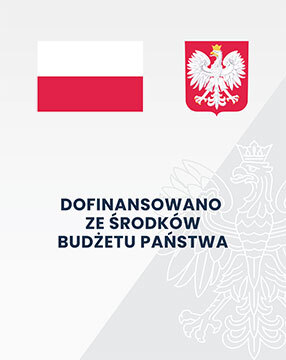Metodologia badań indywidualnego zarządzania informacją: wybrane aspekty
Remigiusz Sapa
Afiliacja: Uniwersytet Jagieloński, Polska
Abstrakt
Cel/teza: Celem badań, których wyniki przedstawione są w artykule było zidentyfikowanie sposobów rozwiązywania istotnych dylematów w projektowaniu badań z zakresu indywidualnego zarządzania informacją.
Koncepcja/metody badań: Przyjęto perspektywę jakościową, a badaniami objęto publikacje udostępniane w zasobach Web of Science Core Collection: Citation Indexes (wyszukane 21 sierpnia 2015 roku), które w tytule zawierały termin personal information management i omawiały badania empiryczne różnych aspektów tej problematyki. Dążono do rozpoznania sześciu elementów: ogólnego celu
badań, ujęcia w czasie, środowiska badań, rodzaju danych i sposobu ich interpretacji, zastosowanych technik i sposobu doboru uczestników badań.
Wyniki i wnioski: Przeprowadzona analiza wskazuje na dużą różnorodność rozwiązań czerpanych z różnych perspektyw metateoretycznych. Wyniki ujawniają kluczowe rozstrzygnięcia metodologiczne podejmowane w badaniach indywidualnego zarządzania informacją.
Oryginalność/wartość poznawcza: Wyniki mogą być pomocne w projektowaniu tego typu badań oraz jako punkt wyjścia do pogłębionych rozważań nad ich metodologią.
Słowa kluczowe
Indywidualne zarządzanie informacją; Metodologia; Projektowanie badań; Techniki badawcze
Deskryptory Biblioteki Narodowej
2001-; 1901-2000; 1945-1989; 1989-2000; Badania naukowe; Metodologia; Metody badawcze; Zarządzanie informacją; Zarządzanie wiedzą;Bibliografia
Abeta, A.; Kakizaki, K. (1998). Operation record based workflow extracting method for personal information management system. In: Proceedings. 3rd Asia Pacific Computer Human Interaction. Los Alamitos, California: IEEE, 224–231.
Barreau, D. (1995). Context as a factor in personal information management systems. Journal of the American Society for Information Science, 46(5), 327–339.
Bergman, O. (2013). Variables for personal information management research. ASLIB Proceedings: New Information Perspectives, 65(5), 464–483.
Bergman, O.; Beyth-Marom, R.; Nachmias, R. (2008a). The user-subjective approach to personal information management systems design: evidence and implementations. Journal of the American Society for Information Science and Technology, 59(2), 235–246.
Bergman, O.; Beyth-Marom, R.; Nachmias, R.; Gradovitch, N.; Whittaker, S. (2008b). Improved search engines and navigation preference in personal information management. ACM Transactions on Information Systems (TOIS), 26(4), article no. 20.
Bergman, O.; Gradovitch, N.; Bar-Ilan, J.; Beyth-Marom, R. (2013). Folder versus tag preference in personal information management. Journal of the American Society for Information Science and Technology, 64(10), 1995–2012.
Bergman, O.; Nachmias, R.; Beyth-Marom, R. (2003). The use of subjective attributes in personal information management systems – initial results. Proceedings of the American Society for Information Science and Technology, 40(1), 509–510.
Bernstein, M.; Van Kleek, M.; Karger, D.; Schraefel, M.C. (2008). Information scraps: how and why information eludes our personal information management tools. ACM Transactions on Information Systems (TOIS), 26(4), article no. 24.
Chengxia, L.; Minling, Z. (2013). Design and implementation of personal information management system in Internet. In: L. Zhang, X. Li, J. Chen (eds.) Proceedings of the 2013 internatioanl conference on information, business and education technology (ICIBET 2013) [online], [08.02.2016], http://www.atlantis-press.com/php/download_paper.php?id=6170
Cisek, S. (2010). Metoda analizy i krytyki piśmiennictwa w nauce o informacji i bibliotekoznawstwie w XXI wieku. Przegląd Biblioteczny, 3, 273–284.
Cutrell, E.; Dumais, S.T.; Teevan, J. (2006). Searching to eliminate personal information management. Communications of the ACM, 49(1), 58–64.
Dengel, A.; Adrian, B. (2011). Helping people remember: coactive assistance for personal information management on a semantic desktop. In: A. Fred, J.L.G. Dietz, K. Liu, J. Filipe (eds.) Knowledge discovery, knowlege engineering and knowledge management. Berlin, Heidelberg: Springer, 3–16.
Elsweiler, D.; Ruthven, I.; Jones, Ch. (2007). Towards memory supporting personal information management tools. Journal of the American Society for Information Science and Technology, 58(7), 924–946.
Ferran-Ferrer, N.; Pérez-Montoro, M. (2009). Gestión de la información personal en usuarios avanzados en TIC. El Profesional de la Información, 18(4), 365–373.
Golemati, M.; Katifori, A.; Giannopoulou, E.G.; Daradimos, I.; Vassilakis, C. (2007). Evaluating the significance of the windows explorer visualization in personal information management browsing tasks [online]. In: E. Banissi et al. (eds.) 11th International Conference Information Visualization: IV 2007. Los Alamitos, Calif. : IEEE Computer Society, 93–100, [09.02.2016],https://www.researchgate.net/profile/Costas_Vassilakis/publication/4260997_Evaluating_the_Significance_of_
the_Windows_Explorer_Visualization_in_Personal_Information_Management_Browsing_tasks/links/00b4951cb36feb0f20000000.pdf
Gwizdka, J.; Chignell, M. (2007). Individual differences. In: W. Jones & J. Teevan (eds.) Personal information management. Seattle: University of Washington Press, 206–220.
Helvoort, A.A.J. van (2012). A questionnaire for the institutional assessment of personal information management. In: S. Kurbanoglu, U. Al, Y. Tonta, N. Ucak (eds.) E-science and information management.
Third International Symposium on Information Management in a Changing World, IMCW 2012, Ankara, Turkey, September 19–21, 2012. Proceedings. Berlin, Heidelberg: Springer, 138–149.
Huvila, I.; Eriksen, J.; Häusner, E.M.; Jansson, I.M. (2014). Continuum thinking and the contexts of personal information management. Information Research [online], 19(1), [08.02.2016], http://www.informationr.net/ir/19–1/paper604.html#.VroD_1IhE2YJacques, J.; Fastrez, P. (2014). Personal information management competences: a case study of future college students. In: S. Yamamoto (ed.) Human interface and the management of information: information and knowledge design and evaluation. Cham: Springer International Publishing, 320–331.
Jones, S.R.; Thomas, P.J. (1997). Empirical assessment of individuals’ “personal information management systems”. Behaviour & Information Technology, 16(3), 158–160. Jones, W. (2007). Personal information management. Annual Review of Information Science and Technology, 41(1), 453–504.
Jones, W. (2008). Keeping found things found: the study and practice of personal information management. Amsterdam, Boston: Morgan Kaufmann Publishers.
Jones, W.; Phuwanartnurak, A.; Gill, R.; Bruce, H. (2005). Don’t take my folders away! Organizing personal information to get things done. In: CHI ‘05 Extended Abstracts on Human Factors in Computing Systems. New York: ACM, 1505–1508.
Kelly, D.; Teevan, J. (2007). Understanding what works: evaluating PIM tools. In: W. Jones & J. Teevan (eds.) Personal information management. Seattle: University of Washington Press, 190–205.
Lehmann, L.; Rensing, Ch.; Steinmetz, R. (2008). Capture of lifecycle information to support personal information management. In: P. Dillenbourg & M. Specht (eds.) Times of convergence. Technologies across learning contexts. Berlin, Heidelberg: Springer, 216–221.
Majid, S.; San, M.M.; Tun, S.T.N.; Zar, T. (2010). Using Internet services for personal information management. In: S. Kurbanoglu, U. Al, P.L. Erdogan; Y. Tonta; N. Ucak (eds.) Technological convergence and social networks in information management. Berlin, Heidelberg: Springer, 110–119.
McAlpine, H.Ch.; Hicks, B.; Tiryakioglu, C. (2011). The digital divide: investigating the personal information management practices of engineers. In: S.J. Culley, B.J. Hicks, T.C. McAloone, T.J. Howard, W. Chen (eds.) DS 68–6: Proceedings of the 18th International Conference on Engineering Design (ICED 11), Impacting Society through Engineering Design, Vol. 6: Design Information and Knowledge, Lyngby/Copenhagen, Denmark, 15.-19.08. 2011 [online], 31–42, [09.02.2016], https://
www.designsociety.org/publication/30611/the_digital_divide_investigating_the_personal_information_management_practices_of_engineers
Naumer, Ch.M.; Fisher, K.E. (2007). Naturalistic approaches for understanding PIM. In: W. Jones & J. Teevan (eds.) Personal information management. Seattle: University of Washington Press, 76–88.
Otopah, F.O.; Dadzie, P. (2013). Personal information management practices of students and its implications for library services. Aslib Proceedings, 65(2), 143–160.
Thint, M.; Case, S.; Azarmi, N.; Azvine, B.; Hare, S. (2003). Personal information management assistants – from research to commercialisation. BT Technology Journal, 21(4), 39–43.
Thomson, L.; Jarrahi, M. (2014). Contextualising information practices and personal information management in mobile work. Information Research [online], 19(4), Proceedings of ISIC, the Information Behaviour Conference, Leeds, 2–5 September, 2014: Part 1, [09.02.2016], http://InformationR.net/ir/19–4/isic/isicsp4.html
Tramullas, J.; Sanchez-Casabon, A.I.; Garrido-Picazo, P. (2009). Personal information management using concept mapping software. El Profesional de la Informacion, 18(6), 601–612.
Truyen, F. (2010). Personal information management: the information companion. In: EDULEARN 10 Conference Proceedings [online], 5399–5406, [09.02.2016], https://www.researchgate.net/profile/Frederik_Truyen/publication/265694460_Personal_Information_Management_The_Information_Companion/links/5592ac8308aed7453d4635fb.pdf
Tungare, M. (2007). Understanding the evolution of users’ personal information management practices. In: C. Baranauskas, P. Palanque, J. Abascal, S. Diniz, J. Barbosa (eds.) Human-Computer Interaction – INTERACT 2007. 11th IFIP TC 13 International Conference, Rio de Janeiro, Brazil, September 10–14, 2007, Proceedings, Part II [online]. Berlin, Heidelberg: Springer, 586–591, [09.02.2016], http://link.springer.com/content/pdf/10.1007%2F978–3-540–74800-7_56.pdf
Van Kleek, M.; André, P.; Moore, B.; Karger, D. (2010). Mixing the reactive with the personal: Opportunities for end-user programming in personal information management. In: A. Cypher, M. Dontcheva, T. Lau, J. Nichols (eds.) No code required: giving users tools to transform the web. Amsterdam, Boston: Elsevier, Morgan Kaufmann, 127–152.
Wang, W.; Peery, C.; Marian, A.; Nguyen, T.D. (2012). Efficient multidimensional fuzzy search for personal information management systems. IEEE Transactions on Knowledge and Data Engineering, 24(9), 1584–1597.
Whittaker, S. (2011). Personal information management: from information consumption to curation. Annual Review of Information Science and Technology, 45(1), 3–62.
Yeo, H.I.; Lee, Y.L. (2014). Exploring new potentials of blogs for learning: can children use blogs for personal information management (PIM)? British Journal of Educational Technology, 45(5), 916–925.
Zhou, L.; Mohammed, A.S.; Zhang, D. (2012). Mobile personal information management agent: supporting natural language interface and application integration. Information Processing & Management, 48(1), 23–31.
Afiliacja: Uniwersytet Jagieloński, Polska
Biogram:
Dr hab. Remi giusz Sapa jest dyrektorem Instytutu Informacji Naukowej i Bibliotekoznawstwa Uniwersytetu
Jagiellońskiego i kierownikiem działającego w nim Zakładu Metodologii Bibliotekoznawstwa i Informacji Naukowej. Prowadzi badania na temat współczesnej komunikacji naukowej, zachowań informacyjnych
i zarządzania informacją. Podejmuje też problematykę metodologii badań informatologicznych
i funkcjonowania bibliotek akademickich. Ostatnio opublikował: Information seeking behaviour of mathematicians: scientists and students. Information Research, 2014, 19(4), paper 644 (współaut. M. Krakowska, M. Janiak); Wsparcie dla indywidualnego zarządzania informacją w polskich repozytoriach uczelnianych.
W: A. Korycińska-Huras, M. Janiak (red.). Komunikacja naukowa w środowisku cyfrowym: badania, zasoby,
użytkownicy. Warszawa: Wydaw. SBP, 2014, s. 81–96.
Kontakt z autorem:
remigiusz.sapa@uj.edu.pl
Instytut Informacji Naukowej i Bibliotekoznawstwa
Uniwersytet Jagielloński
ul. prof. Stanisława Łojasiewicza 4
30–348 Kraków

Utwór dostępny jest na licencji Creative Commons Uznanie autorstwa – Użycie niekomercyjne – Bez utworów zależnych 4.0 Międzynarodowe.
CC BY-NC-ND 4.0 Uznanie autorstwa - Użycie niekomercyjne - Bez utworów zależnych 4.0 Międzynarodowe





